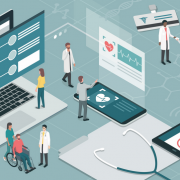Time to address pervasive and unjust forfeiture systems that allows police to deprive even innocent people of their property.
Wikipedia defines Civil Asset Forfeiture “as a legal process in which law enforcement officers take assets from persons suspected of involvement with crime or illegal activity without necessarily charging the owners with any wrongdoing. While civil procedure, as opposed to criminal procedure, generally involves a dispute between two private citizens, civil forfeiture involves a dispute between law enforcement and property such as a pile of cash or a house or a boat, such that the thing is suspected of being involved in a crime. To get back the seized property, owners must prove it was not involved in criminal activity.”
“officers can take cash and property from people without convicting or even charging them with a crime.“
These Civil Asset Forfeiture laws were designed to stifle large scale organized crime by seizing the fruits of their criminal activity. But today this process has almost unruly where officers can take cash and property from people without convicting or even charging them with a crime. Police departments all over have used this process to seize massive amounts of cash and property, to the point that in 2015 the growth in these seizures surpassed the total value of goods stolen from citizens through burglaries. That’s right – police officers took more goods from Americans than burglars did.

Clearly, the use or abuse of this process has gotten totally out of hand. Unlike a typical court case where the defendant is ‘presumed innocent’, in these proceeds individuals who have had their assets seized must sue to prove the assets weren’t the result of or used in a crime. Legally regaining such property is notoriously difficult and expensive, with costs sometimes exceeding the value of the property. Many simply walk away and lose their assets because they cannot afford the legal costs.
On Wednesday in a unanimous decision, the Supreme Court ruled that the Constitution limits the ability of state and local police to seize and keep cash, property, and other assets that may have been used to commit crimes, particularly when it’s used to enrich police departments.
The decision, announced in court and written by Justice Ruth Bader Ginsburg, was a victory for an Indiana man, Tyson Timbs, whose expensive Land Rover sport utility vehicle was confiscated after he pleaded guilty to selling heroin to undercover police officers.
Justice Ginsburg wrote “The protection against excessive fines guards against abuses of government’s punitive or criminal law enforcement authority, is fundamental to our scheme of ordered liberty.”
Timbs became addicted to an opioid prescription for persistent foot pain. When that supply ran out, he turned to drug dealers and eventually to heroin. Because the police said he used his vehicle to facilitate the drug deals — a $42,000 Land Rover bought with money he received from his father’s life insurance policy — the state instituted a forfeiture lawsuit to take it away.
Timbs sold the heroin for $400. His $42,000 Land Rover ended up getting seized by the state of Indiana for the crime. The Supreme Court found the seizure “grossly disproportionate to the gravity of Timbs’s offense,” as Ginsburg wrote.
“Protection against excessive fines has been a constant shield throughout Anglo-American history for good reason: Such fines undermine other liberties,” she added. Hopefully, this ruling will challenge asset forfeiture across the US and Canada.
Click here for more.
Stay tuned!




